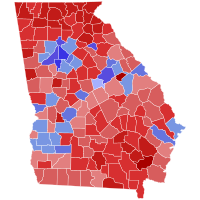로 퍼세이
Rho Persei| 관측 데이터 에폭 J2000 이쿼녹스 J2000 | |
|---|---|
| 별자리 | 페르세우스 |
| 우측 상승 | 03h 05m 10.59385s[1] |
| 탈위임 | +38° 50′ 24.9943″[1] |
| 겉보기 크기 (V) | +3.39[2] |
| 특성. | |
| 진화 단계 | 점근성 거목[3] |
| 스펙트럼형 | M4 II[4] |
| U-B색지수 | +1.79[2] |
| B-V색지수 | +1.65[2] |
| 변수형 | SRB[4] |
| 아스트로메트리 | |
| 방사 속도 (Rv) | +29.10±0.30km[5]/s |
| 고유 운동 (μ) | RA: +1902.22마스[1]/yr Dec.:–1987.70mas[1]/yr |
| 시차 (π) | 10.60 ± 0.25[1] 마스 |
| 거리 | 308 ± 7 리 (94 ± 2 pc) |
| 절대치수 (MV) | –1.7[6] |
| 세부사항[7] | |
| 미사 | 1.9±0.7 M☉ |
| 반지름 | 143±12 R☉ |
| 루미도 | 2,692+192 −180 L☉ |
| 표면 중력 (log g) | 0.37±0.15 cgs |
| 온도 | 3,479±125 K |
| 금속성 [Fe/H] | -0.15 덱스 |
| 회전 속도 (v sin i) | 11.2km[8]/s |
| 나이 | 440Merr[9] |
| 기타 지정 | |
| 데이터베이스 참조 | |
| 심바드 | 자료 |
ρ 페르세이의 라틴어인 로 페르세이는 페르세우스 북쪽 별자리에 있는 별이다.전통적인 이름인 고르고나 테르티아 /ɡɔrrniniːə ˈə///를 가지고 있는데,[11] 페르세우스의 전설에서 나온 고르곤족에 대해 고르고나라고 불리는 4중주단의 세 번째 멤버다.[9]눈에 보이는 시각적 크기 +3.39는[2] 육안으로 볼 수 있게 하지만 잘 비치는 도시 환경에서는 볼 수 없는 도전이다.시차 측정에 근거해 지구로부터 약 308광년(94pc) 거리에 위치한다.[1]
Rho Persei는 반정형 변수 항성으로 겉보기 크기는 3.3과 4.0[12] 사이에 50일, 120일, 250일 사이에 차이가 있다.[6]그 별은 그 진화의 점증하지 않는 거대한 가지에 도달했다.[3]M4 II의 등급이 현란한 밝은 거성이다.[4]바깥쪽 봉투는 유효온도가 3,479K로 [7]M형 별의 붉은 주황색 빛깔을 낸다.[13]
이 별은 질량이 태양의 1.9배인 반면 반지름은 태양보다 143배 더 커졌다.태양 광도의 약 2,700배를 방사하고 있다.[7]로 페르세이는 매년 1.2×10개의−8 태양 질량, 즉 8천3백만 년마다 태양의 질량과 동등한 비율로 질량을 잃고 있다.[14]나이는 약 4억 4천만 살이다.[9]
이름 지정
중국어로 마묘를 뜻하는 大 ((Da Lyng)는 per 페르세이, 9 페르세이, τ 페르세이, ι 페르세이, β 페르세이, β 페르세이, 16 페르세이, 12 페르세이로 구성된 별칭을 말한다.따라서 ρ 페르세이의 중국식 이름 자체가 大陵六(Da Lyng liù, 영어: 제6성묘)이다.[15]
참조
- ^ a b c d e f van Leeuwen, F. (November 2007), "Validation of the new Hipparcos reduction", Astronomy and Astrophysics, 474 (2): 653–664, arXiv:0708.1752, Bibcode:2007A&A...474..653V, doi:10.1051/0004-6361:20078357, S2CID 18759600
- ^ a b c d Nicolet, B. (1978), "Photoelectric photometric Catalogue of homogeneous measurements in the UBV System", Astronomy and Astrophysics Supplement Series, 34: 1–49, Bibcode:1978A&AS...34....1N
- ^ a b Eggen, Olin J. (July 1992), "Asymptotic giant branch stars near the sun", Astronomical Journal, 104 (1): 275–313, Bibcode:1992AJ....104..275E, doi:10.1086/116239
- ^ a b c Ragland, S.; et al. (November 2006), "First Surface-resolved Results with the Infrared Optical Telescope Array Imaging Interferometer: Detection of Asymmetries in Asymptotic Giant Branch Stars", The Astrophysical Journal, 652 (1): 650–660, arXiv:astro-ph/0607156, Bibcode:2006ApJ...652..650R, doi:10.1086/507453
- ^ Famaey, B.; et al. (May 2009), "Spectroscopic binaries among Hipparcos M giants. I. Data, orbits, and intrinsic variations", Astronomy and Astrophysics, 498 (2): 627–640, arXiv:0901.0934, Bibcode:2009A&A...498..627F, doi:10.1051/0004-6361/200810698, S2CID 18739721
- ^ a b Yeşilyaprak, C.; Aslan, Z. (December 2004), "Period-luminosity relation for M-type semiregular variables from Hipparcos parallaxes", Monthly Notices of the Royal Astronomical Society, 355 (2): 601–607, Bibcode:2004MNRAS.355..601Y, doi:10.1111/j.1365-2966.2004.08344.x
- ^ a b c Kallinger, T.; et al. (April 2019), "Stellar masses from granulation and oscillations of 23 bright red giants observed by BRITE-Constellation", Astronomy & Astrophysics, 624: 17, arXiv:1902.07531, Bibcode:2019A&A...624A..35K, doi:10.1051/0004-6361/201834514, A35.
- ^ Massarotti, Alessandro; et al. (January 2008), "Rotational and Radial Velocities for a Sample of 761 HIPPARCOS Giants and the Role of Binarity", The Astronomical Journal, 135 (1): 209–231, Bibcode:2008AJ....135..209M, doi:10.1088/0004-6256/135/1/209
- ^ a b c Kaler, James B., "GORGONEA TERTIA (Rho Persei)", Stars, University of Illinois, retrieved 2012-01-25
- ^ "rho Per -- Semi-regular pulsating Star", SIMBAD, Centre de Données astronomiques de Strasbourg, retrieved 2012-01-24
- ^ Allen, Richard Hinckley (1899), "Star-names and their meanings", New York, G. E. Stechert: 334, Bibcode:1899sntm.book.....A
- ^ Kukarkin, B. V.; et al. (1971), General Catalogue of Variable Stars (3rd ed.), Bibcode:1971GCVS3.C......0K
- ^ "The Colour of Stars", Australia Telescope, Outreach and Education, Commonwealth Scientific and Industrial Research Organisation, December 21, 2004, retrieved 2012-01-16
- ^ Cox, Arthur N.; Becker, Stephen A.; Pesnell, W. Dean (2000), "Chapter 20. Theoretical Stellar Evolution" (PDF), Allen's astrophysical quantities (4th ed.), New York: Springer, p. 516, ISBN 0-387-98746-0, retrieved 2012-01-25 표 20.5 참조
- ^ (중국어로) AEEA(천문학의 전시 및 교육의 활동) 天文教資 2006 2006 2006 2006 年 7 月 11 日


